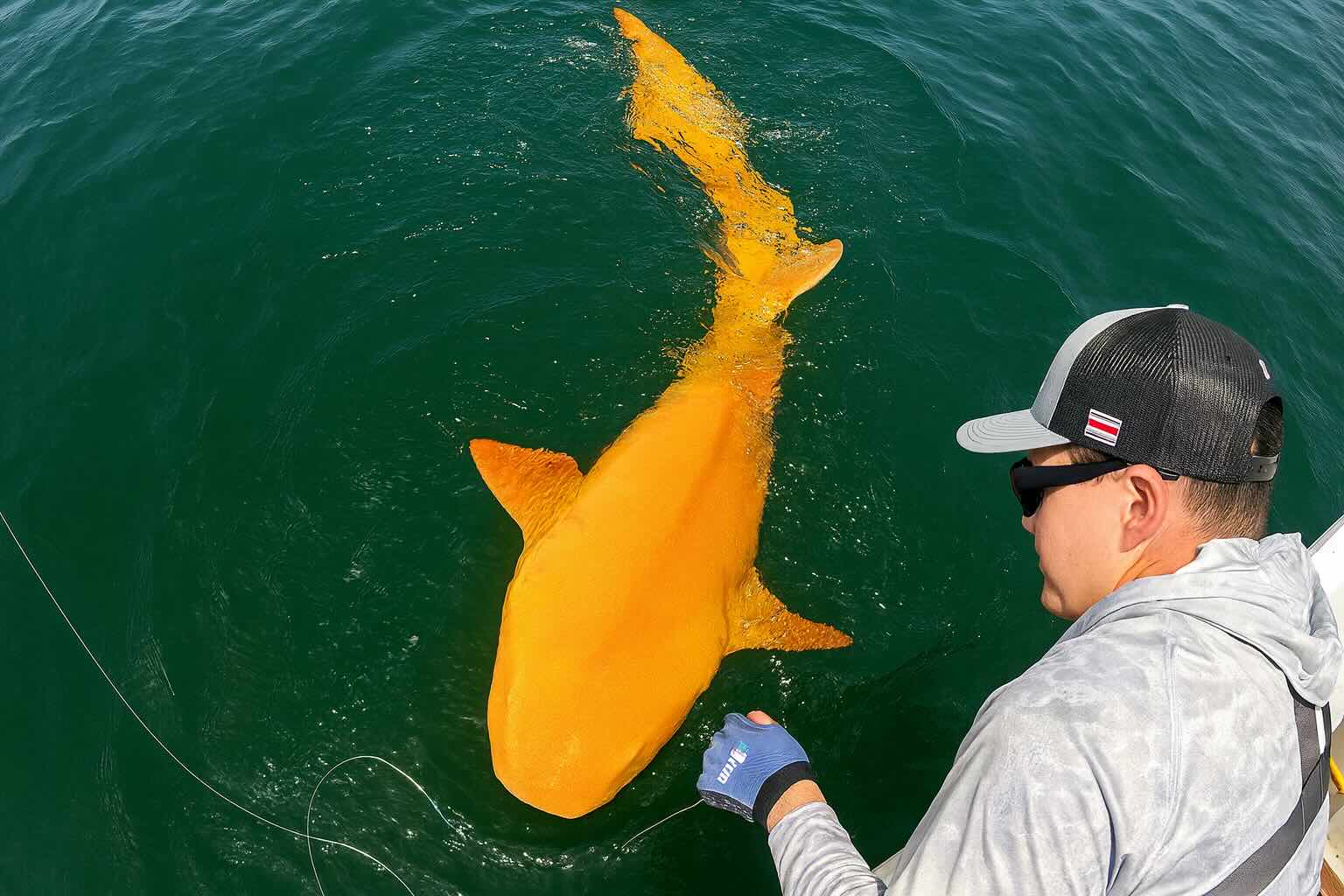A truly unusual discovery has left scientists amazed — a bright orange nurse shark with white eyes has been spotted and released in the Caribbean. The shark, which measured around 6.6 feet (2 meters), carried two rare genetic traits that made it unlike anything seen before in its species.
A First-of-Its-Kind Discovery
The shark was caught by chance in 2024 off the east coast of Costa Rica by sports fishers. Among them was Garvin Watson, owner of the Parismina Domus Dei hotel. Watson described the sight as breathtaking.
“That orange shark shining with the sunlight was something out of the ordinary,” Watson said. “We didn’t know it would become a worldwide discovery.”
After taking photos, the group carefully removed the hook and released the shark back into the sea. Their find has since been documented in the journal Marine Biodiversity.
What Makes This Shark Special?
Researchers confirmed the shark had xanthism (also called xanthochroism), a condition that boosts yellow pigmentation in the skin. While xanthism has been observed in frogs, birds, and some fish, this is the first recorded case in a nurse shark.
To make the find even more remarkable, the shark also showed signs of albinism, a condition marked by the absence of melanin in skin and eyes. Its white eyes, lacking the usual black irises, led researchers to conclude it may have a rare combined condition called albino-xanthochromism. This unusual mix had only been documented once before, in a ray species in the Irish Sea.
Nurse Sharks and Color Variations
Normally, nurse sharks range in color from yellowish to gray-brown. While reports of albino sharks exist, no nurse shark had ever been scientifically confirmed with xanthism until now.
According to lead author Marioxis Macías-Cuyare, a doctoral candidate at the Federal University of Rio Grande in Brazil, the discovery was both surprising and exciting. The team studied photos of the shark and confirmed its extraordinary features.
Animals evolve colors to blend into their environment. Bright pigmentation can often make survival harder by drawing unwanted attention from predators or prey. That’s why this shark’s survival to adulthood is especially fascinating.
Scientists believe the unusual coloring may be genetic, though environmental stress, temperature shifts, or hormonal changes could also play a role. For now, the exact cause remains a mystery.
Why This Matters
The discovery highlights just how much there is still to learn about sharks and marine biology. Rare pigmentation cases give scientists clues about genetics, adaptation, and survival in the ocean.
Despite its unusual coloring, this nurse shark has thrived — proving nature always has surprises waiting to be uncovered.
The bright orange nurse shark with white eyes is more than just a rare sighting. It is a groundbreaking case of xanthism and possible albinism in one individual, expanding what we know about shark biology. From Costa Rica’s waters to global headlines, this shark has captured the attention of scientists and ocean lovers alike.
As researchers continue to study pigmentation in marine life, one thing is clear: the ocean is still full of mysteries.
